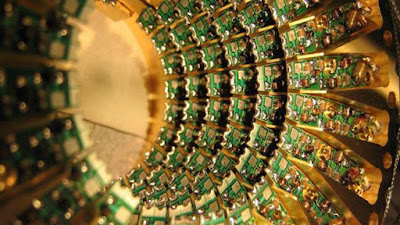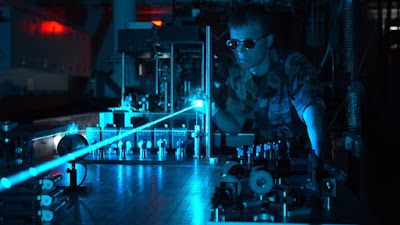How will we diagnose
disease and illness in the future? What would be the power for doctors to know exactly what is wrong with
patients and how they can be treated though simple and quick tests. Those are
the questions that surround the new field of nanomedecine. “Nanomedicine is the
medical application of nanotechnology. Nanomedicine
ranges from the medical applications of nanomaterials and biological devices,
to nanoelectronic biosensors, and even possible future applications of
molecular nanotechnology such as biological machines” (Nanomedicine). One such nanomedicine application is the
Cornell dots or C-dots that utilize small silica-based nanoparticles infused
with dye which light up with fluorescence as they react to cancerous or tumor
tissue. These dots are just one example of how nanotechnology and nanomedicine
can help change patient care forever.
Liposome utilizes nano core shell particles that
self assemble to protect the drug for delivery (Nanomedicine).
Other nanotechnology such as Abraxane, approved by the FDA
uses albumin bound paclitaxel nanoparticles to target breast, lung and
pancreatic caner cells. This is useful and important technology due to the
select targeting made possible by nanotechnology. In the past chemotherapy and
radiation had to be applied body wide and healthy cells were just as likely to
be damaged as the cancerous cells. This results in a great deal of pain,
sickness and even death of patients undergoing the treatment. By comparison new
nanotech solutions will be capable of directly targeting cancerous cells and
administering the medication without harming healthy cells. These drug delivery systems work in part by protecting the drugs with nano scale core shell particles as pictured above.
BIND-014 which uses "targeted nanoparticle
technology to enhance the trafficking of
cytotoxic agents
Nanoparticles are so powerful
as a potential solution to fight cancer and other illnesses because of their
high surface are to volume ratio. This allows for many functional groups to be
attached to a nanoparticle, which can seek out and bind to certain tumor cells.
“Limitations
to conventional cancer chemotherapy include drug resistance, lack of
selectivity, and lack of solubility. Nanoparticles have the potential to
overcome these problems” (Nanomedicine). This functionality would allow doctors
to prescribe highly effective medication that have little to no side effects.
Nanomedicine is the key to creating wonder drugs, even drugs that are specialized
and custom tailored for the patient’s individual traits. One such example is BIND-014 which uses "targeted nanoparticle technology to enhance the trafficking of
cytotoxic agents to cancer cells and increase efficacy, which, if
confirmed in human trials, has the potential to improve outcomes for
patients" (Fiercebiotech).
Nanoparticles such as Bucky Balls - C60 can be bio
accumulative and cause numerous health problems.
The
main problem and limitation is that several Nanoparticles are bio accumulative,
meaning that they can build up in the body or get caught in the lungs of
patients. Carbon nano particles also exhibit structures similar to asbestos.
Effectively this means that certain nanotechnologies are capable causing harm
and possibly lethal results. It is a case where the treatment is as dangerous
as the disease. "A new study into the potential health hazards of the revolutionary
nano-sized particles known as 'buckyballs' predicts that the molecules
are easily absorbed into animal cells, providing a possible explanation
for how the molecules could be toxic to humans and other organisms" (ScienceDaily). Thankfully there are many elements on the periodic table and we
have not exhausted all options. But the result is that advancements and
research has been slow. So while Nanomedicine has the power to forever change
healthcare as it stands today the technology is only ready for highly limited
use, even though its future potential remains strong.
References:
“BIND Biosciences
Initiates Phase 1 Clinical Study.” Fiercebiotech. Fiercebiotech. Web. 26 Nov.
2015.
<http://www.fiercebiotech.com/press-releases/bind-biosciences-initiates-phase-1-clinical-study-bind-014-first-class-targ-0>.
"Nanomedicine."
Wikipedia. Web. 25 Nov. 2015.
<https://en.wikipedia.org/wiki/Nanomedicine>.
<https://en.wikipedia.org/wiki/Nanomedicine>.
“Nanotechnology Risks:
How Buckyballs Hurt Cells.” University of
Calgary. ScienceDaily. 27 May 2008. Web. 25 Nov 2015. <http://www.sciencedaily.com/releases/2008/05/080527091910.htm>.
Prisco,
Jocopo. “Will nanotechnology soon allow you to 'swallow the doctor'?.” CNN.
CNN. 26 Jan 2015. Web. 30 NOV 2015.
<http://www.cnn.com/2015/01/29/tech/mci-nanobots-eth/>.

























